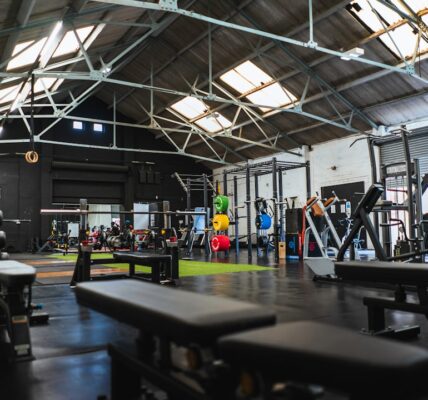Restoring historic buildings in Durham is not merely an act of preservation; it is a vital endeavor that connects the community to its past while shaping its future. These structures serve as tangible links to the city’s rich history, embodying the architectural styles, cultural narratives, and social dynamics of their respective eras. Each building tells a story, whether it be the grandeur of Victorian architecture or the industrial grit of the 19th-century warehouses.
By restoring these edifices, Durham not only honors its heritage but also fosters a sense of identity and pride among its residents. The act of restoration can evoke nostalgia, reminding citizens of their roots and the evolution of their community over time. Moreover, the restoration of historic buildings plays a crucial role in urban development and revitalization.
As cities evolve, there is often a tendency to prioritize new constructions over the preservation of older structures. However, restoring historic buildings can enhance the aesthetic appeal of neighborhoods, attract tourism, and stimulate local economies. For instance, a beautifully restored theater or museum can become a cultural hub, drawing visitors and residents alike.
This influx can lead to increased business for local shops and restaurants, creating a vibrant atmosphere that benefits the entire community. Thus, the importance of restoring Durham’s historic buildings extends beyond mere aesthetics; it is an investment in the city’s cultural and economic vitality.
Challenges and Considerations in Restoring Historic Buildings
Restoring historic buildings is fraught with challenges that require careful consideration and planning. One of the primary obstacles is navigating the regulatory landscape surrounding preservation. Many historic buildings are protected by local, state, or federal laws that dictate how they can be altered or renovated.
These regulations are designed to maintain the integrity of the structure and its historical significance, but they can also complicate restoration efforts. For example, obtaining the necessary permits can be a lengthy process, often requiring extensive documentation and adherence to specific guidelines. This bureaucratic red tape can deter potential investors or developers from pursuing restoration projects.
In addition to regulatory challenges, financial constraints often pose significant hurdles. Restoration projects can be costly, particularly when dealing with older structures that may require extensive repairs or upgrades to meet modern safety standards. The need for specialized materials and skilled labor can further inflate costs.
While grants and tax incentives are available for preservation efforts, securing funding can still be a daunting task. Furthermore, there is often a delicate balance between maintaining historical accuracy and incorporating modern amenities that meet contemporary needs. Striking this balance requires not only financial resources but also a deep understanding of both historical architecture and modern design principles.
Examples of Successful Restoration Projects in Durham

Durham has witnessed several successful restoration projects that exemplify the potential benefits of preserving historic buildings. One notable example is the restoration of the historic Tobacco District, which has transformed former tobacco warehouses into vibrant mixed-use spaces. This project not only preserved the architectural integrity of these structures but also revitalized an entire neighborhood, attracting new businesses and residents.
The adaptive reuse of these warehouses has created a unique blend of history and modernity, showcasing how old buildings can be repurposed to serve contemporary needs while retaining their historical significance. Another remarkable restoration project is the rehabilitation of the Carolina Theatre, a historic venue that has been a cornerstone of Durham’s cultural scene since its opening in 1926. After years of neglect, the theatre underwent extensive renovations that restored its original Art Deco features while upgrading its facilities for modern performances.
The revitalization of the Carolina Theatre has reinvigorated the local arts community, providing a space for concerts, films, and community events. This project not only preserved an important piece of Durham’s history but also enhanced the city’s cultural offerings, demonstrating how successful restoration can breathe new life into historic venues.
The Economic and Cultural Impact of Restoring Historic Buildings
| Metrics | Impact |
|---|---|
| Job Creation | Restoring historic buildings creates employment opportunities in construction, architecture, and preservation industries. |
| Tourism | Restored historic buildings attract tourists, contributing to local economies through increased spending on accommodations, dining, and entertainment. |
| Cultural Preservation | Preserving historic buildings helps maintain a community’s unique identity and heritage, fostering a sense of pride and belonging. |
| Property Values | Restoring historic buildings can lead to increased property values in surrounding areas, benefiting homeowners and local governments. |
The economic impact of restoring historic buildings in Durham is profound and multifaceted. When these structures are revitalized, they often become focal points for tourism, drawing visitors who are eager to explore the city’s rich history. This influx of tourists can significantly boost local businesses, from restaurants to shops that cater to visitors seeking authentic experiences.
Additionally, restored buildings can increase property values in surrounding areas, benefiting homeowners and investors alike. The economic ripple effect extends beyond immediate financial gains; it fosters job creation in construction, tourism, and hospitality sectors. Culturally, restoring historic buildings contributes to a sense of place and community identity.
These structures serve as reminders of Durham’s unique heritage and collective memory, fostering pride among residents. They provide venues for cultural events, art exhibitions, and community gatherings that celebrate local traditions and history. For instance, restored buildings often host festivals or markets that highlight local artisans and craftspeople, further enriching the cultural fabric of the city.
By investing in these historical sites, Durham not only preserves its past but also cultivates a vibrant cultural landscape that engages residents and visitors alike.
Approaches to Sustainable and Eco-Friendly Restoration
In recent years, there has been a growing emphasis on sustainable practices in the restoration of historic buildings. Eco-friendly restoration approaches prioritize minimizing environmental impact while preserving historical integrity. One effective strategy is to incorporate energy-efficient technologies into restoration projects without compromising the building’s character.
For example, installing modern insulation materials that are compatible with historical architecture can enhance energy efficiency while maintaining aesthetic appeal. Similarly, using sustainable materials sourced locally can reduce carbon footprints and support regional economies. Another approach involves utilizing green building certifications such as LEED (Leadership in Energy and Environmental Design) during restoration projects.
These certifications encourage practices that promote sustainability throughout the renovation process. For instance, careful attention to water management systems can lead to reduced consumption while preserving historical features like original plumbing fixtures when feasible. Additionally, integrating renewable energy sources such as solar panels into restored buildings can provide clean energy solutions without detracting from their historical significance.
By adopting these sustainable practices, Durham can set a precedent for responsible restoration that honors both its heritage and environmental stewardship.
Community Involvement in Restoring Durham’s Historic Buildings

Empowering Residents through Inclusive Decision-Making
Community involvement is essential in the restoration of Durham’s historic buildings, as it fosters a sense of ownership and collective responsibility among residents. Engaging local stakeholders in the planning and decision-making processes ensures that restoration efforts reflect the values and desires of the community. Public forums and workshops can provide platforms for residents to voice their opinions on which buildings should be prioritized for restoration and how they envision these spaces being used in the future.
Mobilizing Community Volunteers in Preservation Efforts
Moreover, volunteer initiatives can play a significant role in restoration projects by mobilizing community members to participate actively in preservation efforts. Programs that encourage local residents to contribute their time and skills not only help reduce costs but also strengthen community bonds. For instance, volunteer-led clean-up days or fundraising events can generate enthusiasm around specific projects while raising awareness about the importance of preserving Durham’s architectural heritage.
Cultivating a Shared Commitment to Preserving History
By fostering community involvement in restoration efforts, Durham can cultivate a shared commitment to preserving its history for future generations while enhancing social cohesion among its residents.




